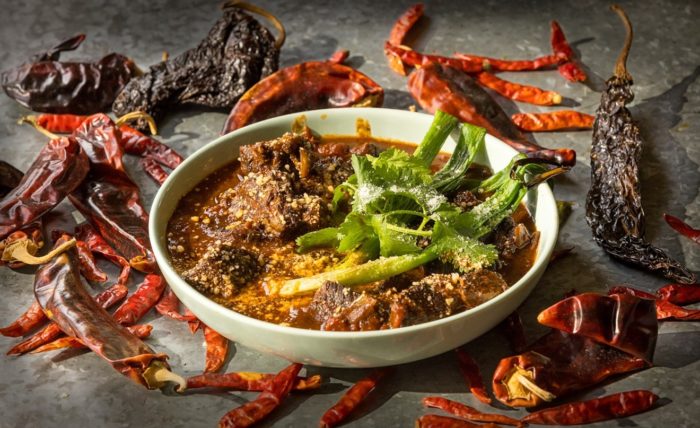ASPARAGUS, MOZZARELLA AND PROSCIUTTO BUNDLES
Serves 4
Bundles can be made 2 hours ahead. Wait to sauté them until just before serving.
16 nice spears of asparagus (not pencil thin), tough bottoms discarded
4-ounce ball of fresh mozzarella sliced into 4 rounds
Salt and freshly ground pepper
8 paper thin slices of prosciutto
4 tablespoons extra virgin olive oil
1 tablespoon white wine or champagne vinegar
Finely slivered fried leeks if desired
Blanch the asparagus in boiling salted water until crisp tender, about 2 minutes. Immediately run under cold water to stop the cooking and set the green color. Place a slice of mozzarella on top of two spears of asparagus. Season with salt and pepper. Top with two more spears then wrap the asparagus with the prosciutto so the mozzarella is enclosed. You’ll need two slices of prosciutto for each bundle.
Heat 2 tablespoons olive oil in a sauté pan (preferably non-stick). Sauté the bundles on all sides until prosciutto has crisped and mozzarella begins to ooze. Place a bundle on 4 warm plates. Whisk remaining olive oil and vinegar together seasoning to your taste with salt, pepper and vinegar and drizzle over. Top with some thinly sliced fried leeks if using.
BACON WRAPPED DATES WITH ALMONDS AND GOAT CHEESE
Makes 24
A simple little hors d’ oeuvre to serve with cocktails. Careful, they are addictive!
24 large moist dates, such as medjool
12 slices of thin sliced bacon, cut in half
4 ounces softened fresh goat cheese
24 whole toasted unsalted almonds
Move oven rack to upper third of oven and preheat oven to 475 °.
Pit dates carefully to hold as much of their shape as you can. Halve the 12 slices of bacon crosswise. If available, put the goat cheese into a pastry bag fitted with a round, plain 1⁄4″ tip.
Stuff cavity of each date with 1 almond. Pipe goat cheese into each stuffed date or alternately use a small demi-tasse spoon. Wrap 1 piece of bacon around width of each date.
Put dates on a baking sheet, seam side down, at least 1⁄2″ apart. Bake until bacon is golden and crisp, about 8 minutes. Set aside to cool briefly before serving.
CHILE CON QUESO, Tex Mex
Serves 4
In Texas they call this dish just queso. It’s a classic Super Bowl party dish.
1-1/2 cups grated extra-sharp cheddar cheese
1⁄2 cup Velveeta, cut into pieces
1⁄2 cup heavy cream
1/4cup chopped green onion
1/4 cup diced tomato
1 tablespoon (or more) jalapeño, stemmed, seeded, and finely chopped
10 ounces homemade or top-quality store-bought tortilla chips
Put cheddar and Velveeta into a medium pot set over another pot of simmering water over medium heat and heat until cheese mixture is nearly melted. Add cream and stir constantly with a wooden spoon until cheese mixture is hot and smooth, 3–5 minutes.
Transfer melted cheese mixture to a warm serving dish and sprinkle onions, tomatoes, and jalapeños on top. Serve immediately with chips.
DUKKAH POPCORN
This is one of the simplest snacks you can make and it introduces you to Dukkha. Pronounced DOO-kah, it originates in Egypt. The name comes from the Egyptian Arabic word for “to pound” or “to crush”, which is how the blend was traditionally made in a mortar and pestle. Today a food processor makes it easier to achieve the same results.
Usually crusty bread or warm flat breads such as pita are dipped in good olive oil and then into the dukkha mixture. It can be used in a myriad of other delicious ways however including to crust for chicken or fish, or sprinkled on top of salads, soups, hummus, roasted vegetables and even fruits.
The exact list of ingredients can vary greatly depending on the maker. Traditionally, dukkha is made at home rather than bought pre-mixed. However, cumin, coriander, fennel seeds, and sesame seeds are almost always featured, as well as one or two types of nuts like peanuts, hazelnuts, walnuts, cashews or pistachios. You’ll also sometimes find other herbs and spices like cayenne, caraway seeds, and dried mint added.
Here’s a recipe that I like. Try it on you next batch of popcorn drizzled with good olive oil.
1 cup almonds and hazelnuts or almonds and macadamia nuts
1/2 cup sesame seeds
1/3 cup coriander seeds
2 teaspoons ground cumin
1 teaspoon salt or to taste
1 teaspoon sugar or to taste
Freshly ground pepper to taste
Extra virgin olive oil to serve
Dry roast the nuts and chop finely. If using hazelnuts be sure to remove the skins before chopping. Toast the sesame seeds and coriander separately in either a dry pan over moderate heat on top of the stove or in a preheated 400-degree oven for 3 – 5 minutes or until fragrant. With a spice or coffee grinder, grind the coriander in short bursts till reasonably fine and add to a bowl along with the nuts and sesame seeds. Grind the cumin, salt and sugar together until very fine. Taste and adjust seasoning to your own taste. Store in an airtight container for up to 4 weeks.
HOISIN GLAZED GRILLED SHRIMP
Makes 8 tapas servings
These are really easy to make and take advantage of two Chinese condiments, sweet hoisin sauce and 5 spice powder that contains cinnamon, star anise, anise seed, ginger and cloves.
1/2 teaspoon five-spice powder
3 tablespoons low-sodium soy sauce
2 teaspoons toasted sesame oil
1 pound large 16 – 20 size shrimps, peeled and deveined
1/3 cup hoisin sauce
2 tablespoons ketchup
2 tablespoons white wine or dry sherry
Preheat the grill. Whisk the five spice, soy sauce and sesame oil together and toss with the shrimp in a bowl to lightly coat.
In a separate small bowl, combine the hoisin sauce, ketchup and white wine or sherry to make a glaze. Have a basting brush ready.
When the grill is hot, place each shrimp directly over the heat. Cook until the shrimp are done on the first side, about 2 minutes. Turn the shrimp over and brush the cooked side with the glaze. Cover the grill, wait 2 minutes and then check the shrimp. If the shrimp are cooked through, turn them over and brush with the glaze and serve warm or at room temperature.
JAPANESE FRIED CHICKEN
Serves 4 – 6
Known as Kara-age this is a classic nibble sold all over Japan and especially at Izakayas, the Japanese bars that dot Tokyo’s nighttime foodscape. Instead of the thick flour based batters that have come from America, this chicken is traditionally marinated, dusted with potato starch and then beautifully and crisply fried. Its got everything you’d want in a bar snack: crispy, juicy, and salty.
1-pound boneless skinless chicken thighs, trimmed of excess fat
3 tablespoons soy sauce
2 tablespoon mirin
1 tablespoon sake (optional)
2 cloves garlic, finely minced or pressed through garlic press
1 tablespoon grated fresh ginger
Vegetable oil for frying
3/4 cup potato or corn starch
Sea salt
1 or 2 lemons, cut into wedges
Cut the chicken into 2-inch pieces. Combine the soy sauce, mirin, sake, garlic, and ginger in a small bowl, add the chicken and gently stir to coat the chicken. Marinate refrigerated for 30 minutes or so.
Add vegetable oil to a heavy, deep skillet to a depth of 1 inch or so. Heat to 350º. Remove chicken from the marinade and dredge them in the potato starch, shaking to remove excess. Add chicken pieces in batches if necessary to the hot oil and cook turning occasionally until brown and crisp, about 5 minutes. Drain chicken pieces on paper towels and season immediately with salt. Serve with lemon wedges to squeeze over.
Chili – A national passion
Chili takes its place at the table of classic American dishes
By Susan Campbell, Hartford Courant Staff Writer
When Lori Hartmann moved with her family to Connecticut, she said goodbye to Texas and to thick, meaty chili, her state’s official dish.
Connecticut is not Texas. Anyone can tell you that. But in the ensuing 14 years, Hartmann learned you can no more be a former Texan than you can escape chili’s thrall.
Chili – whatever its regional form – is pickup trucks and dusty roads. Chili is cold beer and hot nights. Chili is the great equalizer.
Movie star Elizabeth Taylor is said to have ordered hers from fancy-schmancy Chasen’s, sent frozen to the “Cleopatra” set in Rome. Humorist and world traveler Will Rogers measured a town’s worth by the quality of its chili. Outlaw Jesse James (the original, not the television star) ate chili. On the campaign trail, John Kerry once (famously) ate a bowl from a Wendy’s fast-food restaurant (with a Frosty).
Chili is (flags up, drums rolling) universal yet uniquely American. In 1999, Connecticut’s Jane and Michael Stern wrote a book about it (“Chili Nation”) and called the dish the “one truly national shared food.” That’s not hyperbole. What other food has an entire cult grown up around it, with fierce discussions as to ingredients, its origin and its place on the table of classic dishes.OK, maybe barbecue, but still.
Chili has multiple festivals devoted to it, and if you live in America, you live within driving distance of a chili cook-off.
All this over a simple bowl of red. No other country – certainly not Mexico, where people mistakenly place chili’s roots (and Mexicans wish they wouldn’t) – could get so bent out of shape over such an easy dish. For all its lore, chili is, says Carol Hancock, owner and CEO of the International Chili Society, a bowl of meat, chili peppers, and spices.
“It doesn’t take a genius to add spices to bad meat,” says Hancock.
Let’s start with the dish’s origin, a birth shrouded in mystery and drowning in half-truths. Chili, according to the Hancock’s Society literature, may have been created on Western cattle drives. All those spices were a great way to mask the tang of inferior meat. Or it may have come from a beautiful Spanish nun known to people in the Southwest as La Dama de Azul (the lady in blue), says Linda Stradley, author of the cookbook “I’ll Have What They’re Having: Legendary Local Cuisine.”
The mysterious woman might have been the first to write down a chili recipe, says Stradley, or the first recipe may have come from Texas prisons.
Or it could have come from the so-called Chili Queens, women of San Antonio who gathered downtown in the 1800s to sell their meaty chili. A carnival built up around them, with musicians and performers, but the trade shut down in the 1930s, when the town began to require that vendors meet restaurant hygiene standards.
Whatever chili’s origin, the recipe has traveled and has been altered (some would say “mutated”) with regional touches. People in Cincinnati like their chili with flavors a Texan might look for in cookies – like cloves and molasses. But make no mistake, Cincinnati is a chili town. The Greater Cincinnati Convention and Visitors Bureau says natives eat more than 2 million pounds of chili every year, with 850,000 pounds of shredded cheddar cheese on top.
The original Texas chili includes beef. Arizona’s has pork. Maryland has seafood such as crabmeat. In certain dark parts of Missouri, chili lovers use cracker meal, with no tomato sauce at all. Connecticut is not known for its chili, although there are good bowls to be had at, among other places, The Cookhouse in East Hartford, New Milford and Darien, which serves what Connecticut Magazine called the state’s best chili this year. And there’s also Capitol Lunch – with its thick, sludgy meat sauce – in New Britain and at the newer place in Storrs.
The original chili recipe did not include beans, and some purists still scoff when someone throws a few pintos into the pot. In chili-heavy cultures in the Southwest, it is considered proper etiquette to offer beans only as a side dish.
The International Chili Society is a nonprofit organization that sanctions cook-offs – so long as the events’ profits go to a charity or a nonprofit organization. By the time they’ve counted the proceeds for this past cook-off season, which ended Sept. 30, Hancock said the organization will have raised $78 million in the 39 years of the society’s existence.
“A bowl of red is what we were founded on,” said Hancock. “I think people do goofy things, and it may be good, and your family may like it, but it’s not going to be a bowl of red.” She said the society sticks to some rules to make the judges’ job easier (they’re all volunteers). She talks about prize-winning chili as one would talk about the clothes in a fashion show. The wares are lovely to look at, but they’re not for the common folk.
“You’ve never tasted anything like a $35,000 bowl of chili,” Hancock said. “It’s magnificent. At the same time, you probably wouldn’t sit down and eat a whole bowl of it like a meal. You’d have the juicier, more tomato-y version. If you made chocolate mousse, you wouldn’t sit down and eat a pan of it. You’re going to have a small sampling.”
These days, Hartmann, administrative assistant in Windsor’s building department, is the self-styled Empress of Chili at the town’s Chamber of Commerce annual Chili Challenge.
For this year’s event, which drew 25 contestants, she wore a shiny green cape (made by her sister) and a cowgirl hat. And she carried a 6-foot wooden spoon like a scepter. Maybe the spices have gone to her head, but it’s all in keeping with the egalitarian spirit of chili. “You get culture shock when you get here,” Hartmann said, laughing. Wherever she is, “people are attracted to chili cook-offs.
There’s a camaraderie among people who like chili. I see a lot of the contractors at the chili cook-off. I never see them at the carol sing, or other events on the green. And the people go all out for their booths. We had one called Novocaine Chili – it was `numby.’ We had a Chili’s Angels.”
For her own brew, Hartmann swears by the chilies she orders from New Mexico, and San Antonio’s Gephardt chili powder, the first commercial powder sold in 1896. And no beans, of course.
The (potentially) original Texas chili
–From the International Chili Society
Cut up as much meat as you need – beef’s best – in pieces about the size of a pecan. Put meat in a pot with enough suet so the meat won’t stick to the sides of the pot. Cook the mixture with about equal amounts of wild onions, garlic, oregano and chilies as you have meat. Add salt to taste. Stir from time to time. Cook until meat is tender.
Cincinnati chili
Ingredients:
1 large onion, chopped
1 pound extra-lean ground beef
1 clove garlic, minced
1 Tbsp. chili powder
1 tsp. ground allspice
1 tsp. ground cinnamon
1 tsp. ground cumin
1/2 tsp. red (cayenne) pepper
1/2 tsp. salt
1-1/2 Tbsp.s unsweetened cocoa or 1/2 ounce grated unsweetened chocolate
1 (15-ounce) can tomato sauce
1 Tbsp. Worcestershire sauce
1 Tbsp. cider vinegar
1/2 cup water
1 (16-ounce) package uncooked dried spaghetti pasta
Toppings: Can include shredded cheddar cheese, chopped onions, and/or kidney beans
1. In a large frying pan over medium-high heat, sauté onion, ground beef, garlic, and chili powder until beef is slightly cooked.
2. Add allspice, cinnamon, cumin, cayenne pepper, salt, unsweetened cocoa or chocolate, tomato sauce, Worcestershire sauce, cider vinegar, and water. Reduce heat to low and simmer, uncovered, for 1-1/2 hours. Remove from heat.
3. Cook spaghetti according to package directions and transfer onto individual serving plates (small oval plates are traditional). Ladle chili over spaghetti, and serve with toppings of your choice. Serves 4 to 6.
–from whatscookingamerica.net
Hillbilly chili
Ingredients:
3 pounds hamburger
1-1/2 tsps. crushed garlic
1-1/2 tsps. ground cumin
1/2 cup cracker meal
2 tsps. of salt
Cook beef in a large pot until tender and brown. Add garlic and cumin and simmer for 15 minutes. Add 2 quarts of water and cracker meal. Simmer 1 hour. Good served over spaghetti. Also good served with dill pickles and onions. No. Really.
–Adapted from a recipe of Fred and Red’s chili parlor in Joplin, Mo.
This chili uses cooked turkey, which will be in ample supply in households during the holidays.
West Coast turkey chili
Ingredients:
1 cup cubed (1/4-inch) green pepper
1-1/4 cups coarsely chopped onion
2 cloves garlic, minced
3 Tbsps. canola oil
2 (15-ounce) cans kidney beans, rinsed and well drained
1 (28-ounce) can crushed tomatoes
1 cup dry red wine
3 cups cubed (1/2-inch) cooked turkey
1 Tbsp. chili powder
1 Tbsp. coarsely chopped fresh cilantro
1 tsp. crushed red pepper
1/2 tsp. salt
1. In a 3-quart saucepan over medium-high heat, sauté green pepper, onion and garlic in oil for 5 minutes or until vegetables are tender-crisp.
2. Add beans, tomatoes, wine, turkey, chili powder, cilantro, red pepper and salt. Increase heat and bring mixture to a boil; reduce heat and simmer, uncovered, 25 minutes.
3. To serve, ladle into bowls and garnish with additional onion or fresh cilantro. Serves 8.
–From the National Turkey Federation

TEXAS RED
Makes about 12 cups; serves 6 – 8
No beans but you could add them if you like. I usually serve this with jasmine rice and a garnish of grated cotija cheese and cilantro and some pan grilled green onions.
8 whole mixed dried chiles (5 ancho and 3 guajillo or all ancho), about 3 ounces
3 tablespoons vegetable oil, plus more as needed
3 pounds trimmed beef chuck, cut into small pieces (1 inch or so)
Salt and freshly ground pepper
2 large onions, coarsely chopped (4 – 5 cups)
8 garlic cloves, minced (5 tablespoons)
2 jalapeno or serrano chiles, seeded if desired, minced
2 1/2 teaspoons ground cumin
1 1/2 teaspoons dried oregano
1 can (28 ounces) whole peeled plum tomatoes, hand crushed or pureed with their juice
4 cups beef or chicken stock
1 tablespoon dark brown sugar
2 tablespoons soy sauce
2 to 3 teaspoons red wine vinegar, or to taste
Toast dried chiles in a dry skillet over medium-high heat until fragrant and puffed, 1 to 2 minutes per side. Remove stem and seeds and discard. Transfer chiles to a large measuring cup or bowl, and cover with hot water. Keep chiles submerged with a small plate on top and let soak for 30 minutes. Remove from water and puree in a blender with 1/2 cup or so soaking liquid. Reserve remaining soaking water for thinning.
Heat a large heavy pot over high heat. Add 2 tablespoons oil. Season beef with 2-1/2 teaspoons salt and 1/2 teaspoon pepper. Brown beef in two batches, adding more oil as needed, about 10 minutes. Transfer to a bowl.
Add remaining tablespoon oil, the onions, garlic and minced serranos to pot, and cook over medium-high heat until onions are translucent, about 5 minutes. (If the pan gets too dark, add a little water, and scrape up browned bits with a wooden spoon to deglaze.) Add cumin and oregano, and cook, stirring, until fragrant,1 minute.
Stir in browned beef and chile puree. Add tomato, stock, sugar, and 1 teaspoon salt. Bring to a boil. Reduce heat and simmer gently, covered until meat is very tender, and juices are thick, 2 1/2 to 3 hours. (Check pot once an hour for excessive evaporation; if chili mixture seems dry, add a little of the chile soaking water.) Season stew with salt to your taste and stir in soy sauce and vinegar. Serve immediately (or refrigerate for up to 3 days or freeze for up to 3 months; reheat in a pot over medium heat, stirring occasionally).




